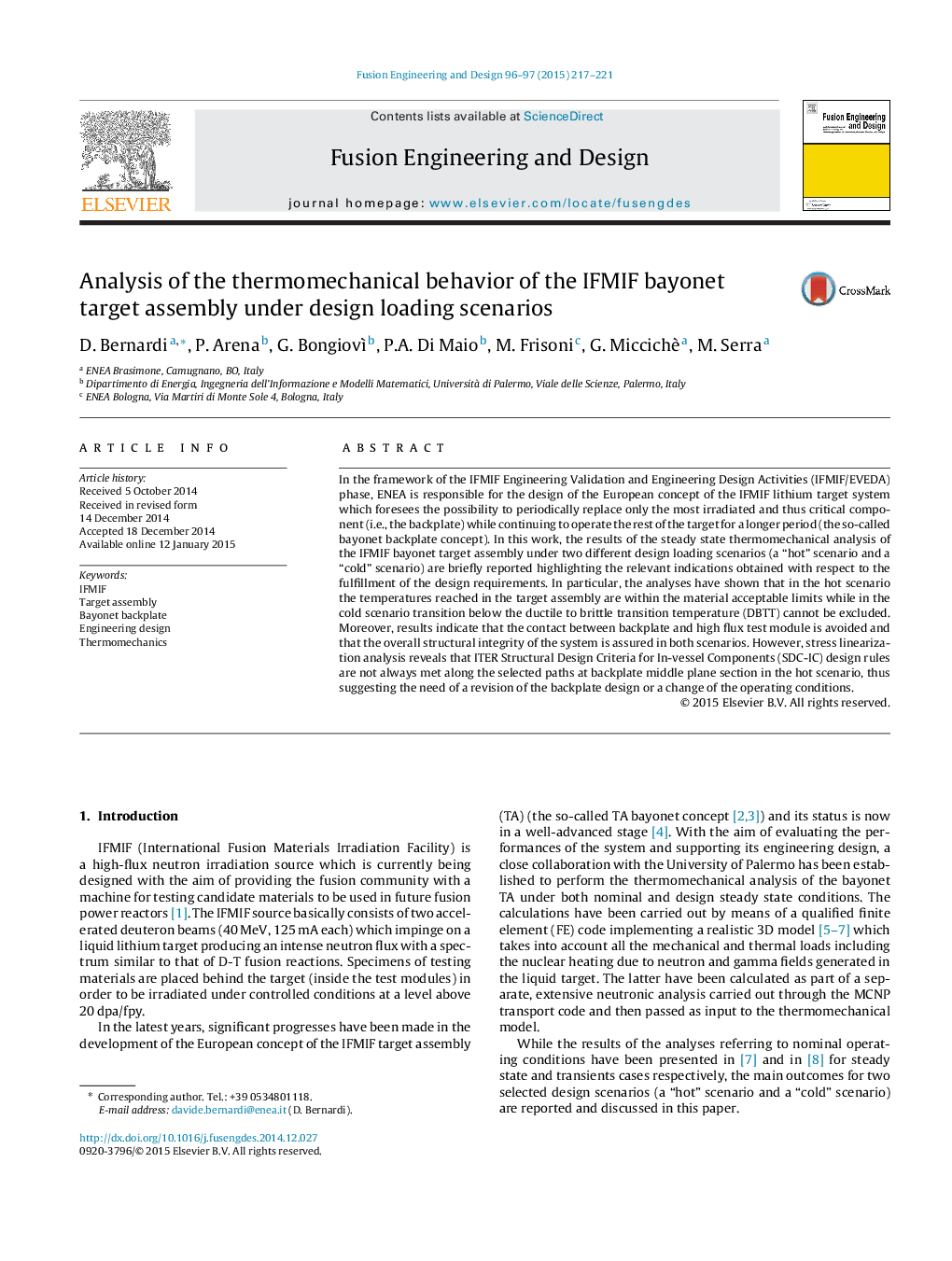| Article ID | Journal | Published Year | Pages | File Type |
|---|---|---|---|---|
| 6745945 | Fusion Engineering and Design | 2015 | 5 Pages |
Abstract
In the framework of the IFMIF Engineering Validation and Engineering Design Activities (IFMIF/EVEDA) phase, ENEA is responsible for the design of the European concept of the IFMIF lithium target system which foresees the possibility to periodically replace only the most irradiated and thus critical component (i.e., the backplate) while continuing to operate the rest of the target for a longer period (the so-called bayonet backplate concept). In this work, the results of the steady state thermomechanical analysis of the IFMIF bayonet target assembly under two different design loading scenarios (a “hot” scenario and a “cold” scenario) are briefly reported highlighting the relevant indications obtained with respect to the fulfillment of the design requirements. In particular, the analyses have shown that in the hot scenario the temperatures reached in the target assembly are within the material acceptable limits while in the cold scenario transition below the ductile to brittle transition temperature (DBTT) cannot be excluded. Moreover, results indicate that the contact between backplate and high flux test module is avoided and that the overall structural integrity of the system is assured in both scenarios. However, stress linearization analysis reveals that ITER Structural Design Criteria for In-vessel Components (SDC-IC) design rules are not always met along the selected paths at backplate middle plane section in the hot scenario, thus suggesting the need of a revision of the backplate design or a change of the operating conditions.
Related Topics
Physical Sciences and Engineering
Energy
Energy Engineering and Power Technology
Authors
D. Bernardi, P. Arena, G. Bongiovì, P.A. Di Maio, M. Frisoni, G. Miccichè, M. Serra,
